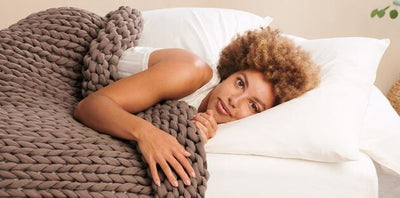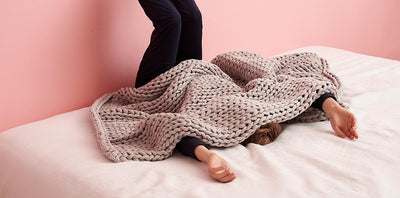On the Edge of Discomfort: Lower Back Pain When Sitting But Not Standing
Lower back pain is a common experience for most adults. However, things may get a bit tricky if this interferes with your day-to-day activities, like if you’re unable to sit due to back pain. Here, we discuss causes of this discomfort as well as easy-to-try remedies

Bearassentials
Lower back pain when sitting but not standing is typically due to poor posture.
Other than maintaining an upright posture, you may also consider back stretching exercises for relief.
If the pain lasts for longer than 2 weeks, you may want to see a medical professional for an assessment.
Did you know?
It's estimated that around 90% of back-related aches are in the lower back area.
Have you ever felt lower back pain when sitting but not standing? Worry not… you are not alone. Back pain is one of the most prevalent issues, with up to 80% of adults experiencing it at some point in their lives. For many people, back aches disrupt daily life, making simple tasks like sitting, working, and even enjoying hobbies painful.
This pain may result from various factors, including poor posture, muscle strain, or herniated discs. Treatment options range from exercises and ergonomic improvements to medical consultation if pain persists for 2-6 weeks. Understanding the potential causes and seeking timely medical assistance when needed can help address this prevalent problem.
What Can Cause Lower Back Pain When Sitting?
Most people are used to experiencing back pain when standing for long periods of time. However, others feel lower back pain only when sitting. This distinction is important to understand, as the causes of different kinds of back pains differ.
Below are some potential factors behind lower back pain when sitting down:
- Poor Posture
- Improper weight lifting
- Trauma impact or injury
- Carrying heavy backpacks
Certain medical conditions may also contribute to lower back pain when sitting
- Herniated Discs
- Trunk Muscle Strain
- Spinal Stenosis
- Tailbone Pain (Coccydynia)
- Arthritis
- Sacral Tumors

How Common Is Lower Back Pain?
Lower back pain is one of the most prevalent reasons for doctor visits and missed work days worldwide. Statistics on the exact prevalence of lower back pain can vary depending on the region and the population studied, but it's estimated that:
- Approximately 80% of people will experience lower back pain at some point in their lives.
- Each year, about 20% of adults will experience lower back pain.
- Around 10-15% of people experience chronic lower back pain (12 weeks or longer).
Lower back pain can affect people of all ages, though it becomes more common as individuals get older. Lifestyle factors such as sedentary behavior, obesity, and lack of exercise can contribute to the development or worsening of lower back pain.
How Do You Recognize Back Pain From Sitting?
Identifying whether your lower back pain is due to sitting or another cause is crucial for proper diagnosis. Ask yourself the following questions to determine the source of your discomfort:
- Are you spending extended hours sitting, like doing desk work?
- Is your chair ergonomic and supportive of proper posture?
- Do you frequently slouch or maintain an unhealthy sitting position?
- Has the pain developed gradually over time?
- Does the back pain feel worse when sitting?
- Do you feel a stiff back when standing up from a seat?
The answers to these questions can provide valuable insights into the origin of your back pain. For those in desk jobs, these factors often align, making back pain from sitting a common issue. Recognizing these elements is the first step in addressing and preventing such discomfort.
Is It Treatable?
Lower back pain can be treated through various methods, tailored to the underlying causes. Some changes include home remedies and lifestyle changes, while others may involve seeking appropriate medical attention. Here's a breakdown of treatment options:
1. Lifestyle Changes: You may want to focus on maintaining proper sitting posture. Strengthening your back and core muscles through exercises like planks and arches can also help deal away with back pain.
2. Home Remedies: Consider alternating between ice and heat applications to reduce inflammation and ease muscle tension around your lower back area.
3. Physical Therapy: Physical therapists can recommend specific exercises to target your lower back pain. Licensed massage therapists can also provide targeted massages to alleviate pain and inflammation
4. Ergonomic Solutions: Utilizing standing desks may help improve posture and reduce the strain caused by prolonged sitting. Also, you may consider bolster pillows for pressure relief as you sit. Our Cuddling is ergonomically designed to restore and reset your back muscles as you rest or get some desk work done.
It's essential to try these methods before seeking extreme medical interventions. If your lower back pain persists, consider consulting a healthcare professional to determine the most suitable treatment for your specific case
Simple Exercises And Stretches For A Healthy Back
There are some simple exercises that can help you maintain a healthy back, but remember to consult your doctor before starting any exercise regimen. The exercises below focus on building strength and flexibility, and each movement may be repeated 5 to 10 times. You may view some demonstrations here:
i) Knee-to-Chest Stretch: Lie on your back with knees bent. Bring one knee toward your chest, hold for 5 to 10 seconds, and return to the starting position. Repeat with the other leg.
ii) Double Knee-to-Chest Stretch: Lie on your back with knees bent and feet on the floor. Bring both knees toward your chest, hold for 5 to 10 seconds, and return to the starting position.
iii) Lower Back Flattening: Lie on your back with knees bent and feet on the floor. Gently flatten your lower back to the floor for 5 to 10 seconds, then relax.
iv) Lower Back Arching: Lie face down and gently arch your lower back, resting on your forearms. Hold the position for 10 seconds, then relax.
v) Leg Lifts: Start on your hands and knees. Lift and straighten one leg gently backward without raising it above your body level. Hold for 5 seconds.
vi) Buttock Raises: Lie on your back with knees bent and feet on the floor. Lift your buttocks off the floor 4 to 6 inches, hold for 5 seconds, and return to the starting position.
Exercise serves two essential purposes for lower back pain when sitting but not standing. It can alleviate existing pain and prevent future episodes. Yoga is a popular and effective method for achieving both results. It stretches and lengthens lower back muscles, reducing current pain and providing better support.
However, exercise, including yoga, carries risks. Some poses may be challenging initially, so avoid overextending or straining your back. If you feel any pain, you may want to stop immediately and progress gradually. Pilates is another excellent option to reduce lower back pain, offering relief for neck and back discomfort without added strain.
Best Sitting Positions For Lower Back Pain
For many individuals, prolonged sitting at a desk often leads to lower back discomfort. Therefore, it's valuable to understand the optimal positions for alleviating or preventing lower back pain while seated.
The U.S. Office of Disease Prevention and Health Promotion (ODPHP) suggests the following tips for maintaining proper sitting posture:
- Avoid slouching, both while sitting and standing.
- Ensure your feet are flat on the ground and your back is supported by the chair.
- Keep your knees positioned slightly higher than your hips.
- Maintain a straight back, with shoulders pulled back and head held high.
- Whenever possible, switch between sitting and standing.

These practices help alleviate strain on your back muscles and promote a feeling of elongation and stretching in the back. For extra relief, consider investing in ergonomically designed tools, such as chairs and bolster pillows. Our Cuddling is great for cushioning your body for soothing support, wherever you are.
When To See a Doctor
If you experience persistent lower back pain that self-care and medication don't alleviate, consider consulting a doctor. They can diagnose and treat the issue, ruling out serious conditions like tumors or fractures.
Determining when to see a doctor can be challenging. Generally, consider medical attention if pain persists for 2-6 weeks. If pain temporarily improves with self-care, waiting up to six weeks is an option, but early consultation is wise. You may need to seek immediate medical attention if you experience:
- Sudden, severe back pain with weakness or numbness
- Loss of bladder control
- High fever
- Severe abdominal pain
- Unexplained weight loss
- Pain following a severe fall or injury to the back
Conclusion
Lower back pain when sitting but not standing is a common issue stemming from our modern lifestyles. Being aware of the risk factors and taking proactive measures can lead to pain-free days at work and at home. You may want to remember, movement and proper posture are your allies in preventing and managing lower back pain.
If you find that you do a lot of deskwork or tend to sit for most of your day, consider investing in ergonomic products that will support your back. Our Cuddling is a soothing bolster pillow, designed for lumbar support, as it removes pressure from your back when you’re sitting.
If you notice that these recommendations do not help and your back pain lasts for over 2 weeks, consider seeking medical attention. Doing so will help you rule out any underlying chronic conditions that may worsen your pain as they develop.






